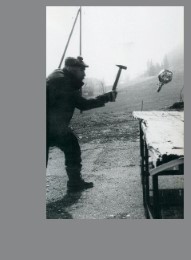Detailansicht
Jean Tinguely
Torpedo Institut, Edition Patrick Frey 187
ISBN/EAN: 9783905929867
Umbreit-Nr.: 8202212
Sprache:
Französisch
Umfang: 254 S.
Format in cm: 2 x 28.7 x 21.2
Einband:
gebundenes Buch
Erschienen am 25.09.2015
- Zusatztext
- "There are prisons for thieves, museums for artists." This was the credo of Jean Tinguely (1925-1991) when in 1988 he acquired La Verrerie, an abandoned factory between Freiburg and Lausanne. He spent four years working tirelessly and with boundless energy to set up his "total anti-museum" there. He called it the "Torpedo Institut" and turned the 3,000 sq. m. factory into his studio - a workshop, theater stage, exhibition venue and artwork all in one. In its vast dark halls Tinguely displayed not only machines and sculptures, but also works by Niki de Saint Phalle, Eva Aeppli, Bernhard Luginbühl, Daniel Spoerri, Giovanni Battista Podestà, Ben Vautier et al. Tinguely's anti-museum was a venue with unpredictable opening hours and rather baffling terms of admission. A venue that was constantly evolving and governed by rules of its own. It was essentially a total artwork representing the formal and conceptual synthesis and success of Tinguely's career. After his death, the Torpedo Institut was closed down, contrary to the wishes stipulated in his will. It does not appear on any list of his works and is hardly mentioned anymore in discussion of Tinguely. It is not even included in the recently published catalog of the Tinguely Museum collection in Basel, which promises to provide a revised view of the artist's oeuvre. Jean Tinguely. Torpedo Institut now assigns this anti-museum to its rightful place among the Swiss artist's late works. It provides edifying and authentic documentation aimed at reconstructing the Torpedo Institut in its entirety for the first time. So this is an important and exciting publication that makes an urgently needed contribution to the reception of Tinguely's work and asks some important questions: How do we handle artistic legacies? What kind of reception do we foster? What kind do we proscribe? (Mirjam Fischer)
